Lower back pain is a common problem for many cyclists, from beginners to pros.
This pain can really affect how much you enjoy cycling.
Knowing what causes it and how to prevent it can help you ride without pain and have a better cycling experience.
In this blog, we’ll delve into the causes of lower back pain in cyclists, explore effective prevention strategies, and discuss management techniques to keep you riding comfortably.
Let’s gear up and tackle this issue head-on!

Understanding the Anatomy of the Lower Back
Key Muscles Involved
The lower back has several important muscles, like the erector spinae, multifidus, and quadratus lumborum. These muscles help you keep good posture and stay stable while cycling.
The erector spinae runs along your spine and helps you bend and twist. The multifidus stabilizes your vertebrae, and the quadratus lumborum helps with side-to-side movements.
The Role of the Spine
The spine is made up of bones, discs, ligaments, and nerves. It supports your body, allows you to move, and protects your spinal cord. When you cycle, your spine takes on a lot of stress.
Keeping your spine healthy is key to avoiding lower back pain and staying comfortable while riding.
Common Causes of Lower Back Pain in Cyclists
Poor Bike Fit
Saddle Height Issues
If your saddle is too high or too low, it can cause bad posture and strain your lower back. A high saddle can make you overextend your legs and hips, causing pain.
A low saddle can make your knees bend too much, also leading to back pain. Make sure your saddle is at the right height for you.
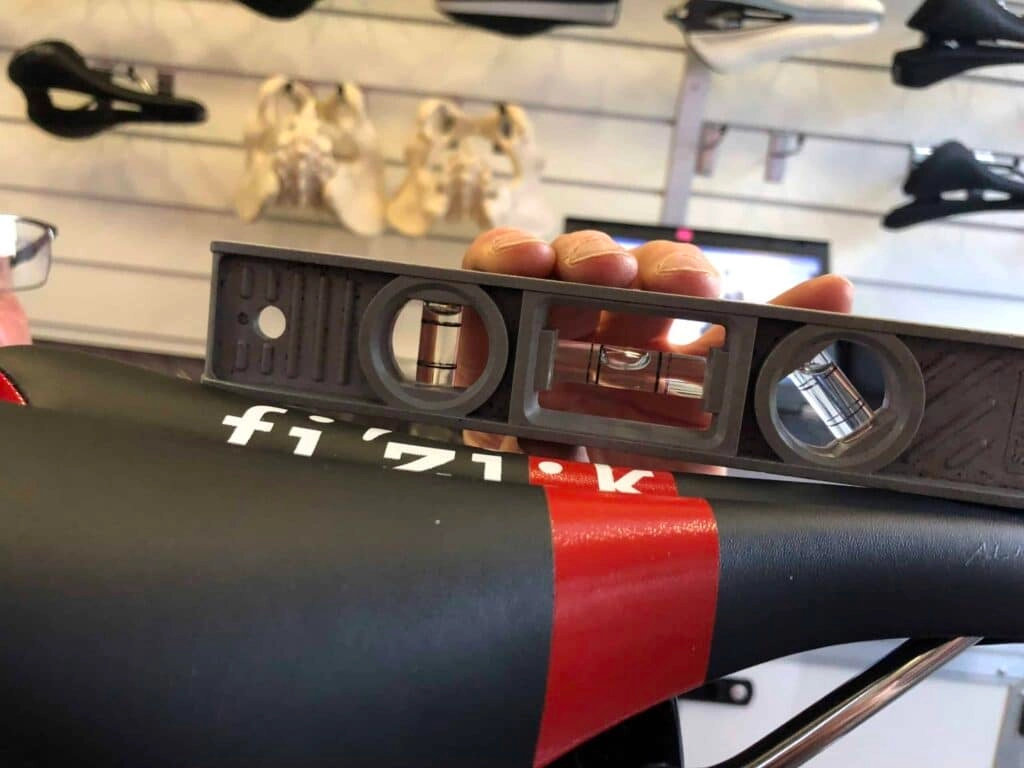
Handlebar Position
The position of your handlebars can affect your posture and how much strain is on your lower back. If the handlebars are too low or too far forward, you might hunch over, causing back pain.
Adjusting the handlebars to the right height and distance can help you keep a neutral spine and reduce pain.
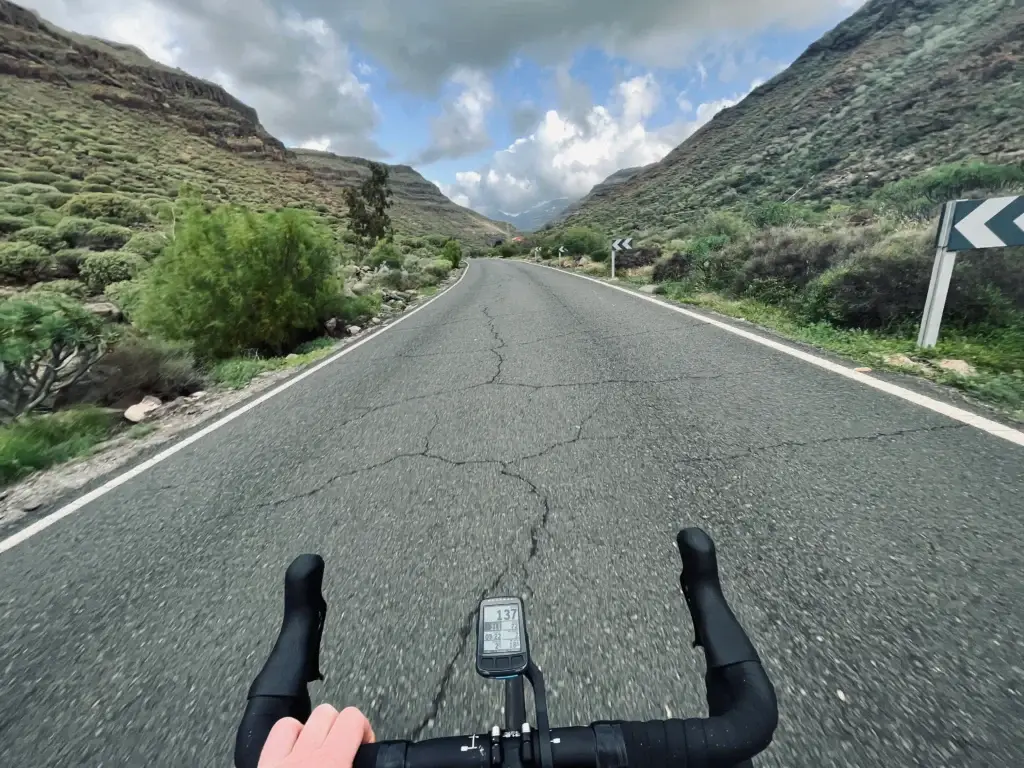
Frame Size Considerations
Choosing the right frame size is important for a comfortable ride. A frame that’s too big or too small can cause bad posture and strain your lower back. Make sure the frame size fits your body to avoid pain and improve your cycling performance.
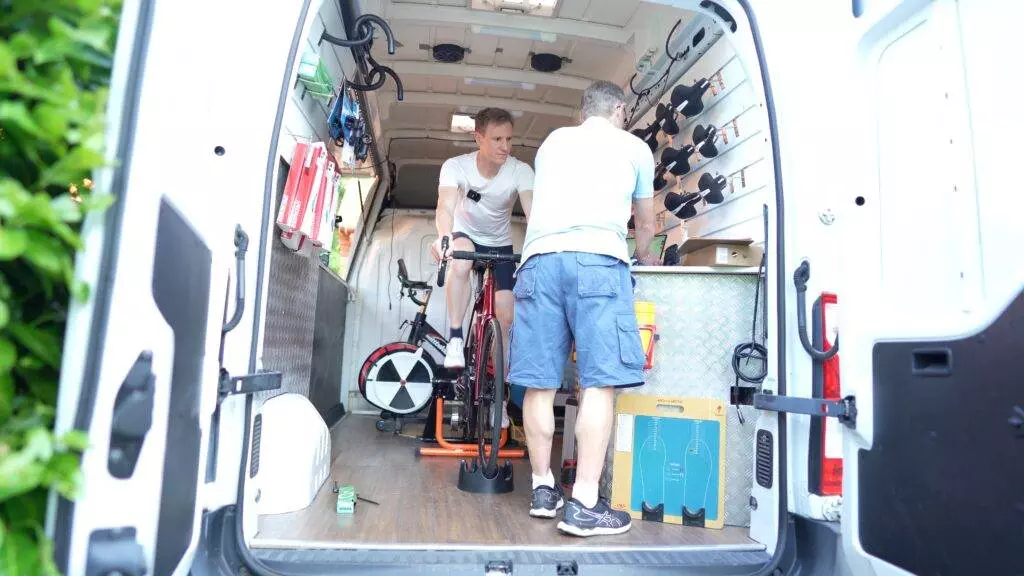
Lack of Core Strength
Importance of Core Muscles
Your core muscles support your spine and help you keep good posture while cycling. If your core is weak, it can’t support your spine well, leading to back pain. Strengthening your core can help you stay stable and reduce the risk of pain.
Common Weaknesses in Cyclists
Many cyclists don’t do enough core exercises, leading to weak spots that cause back pain. Doing exercises like planks, bridges, and abdominal workouts can help strengthen your core and improve your cycling.
Prolonged Riding
Effects of Long Hours in the Saddle
Riding for long hours without breaks can make your lower back stiff and sore. Your muscles can get tired, and the strain on your back increases. Taking regular breaks and stretching can help prevent this pain.
Stiffness and Discomfort
Riding for a long time without breaks can make your lower back stiff and uncomfortable. Taking breaks to stretch and change positions can help you stay comfortable.
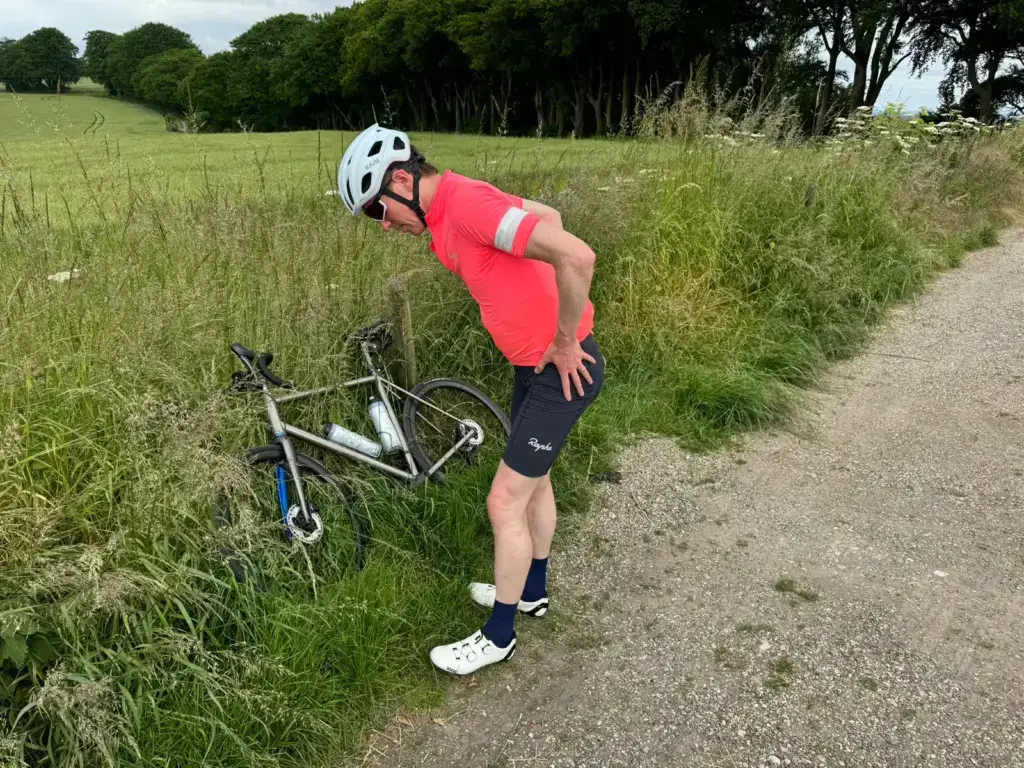
Incorrect Riding Technique
Poor Pedalling Technique
Bad pedalling technique can make back pain worse. Focus on keeping a smooth and steady pedal stroke to reduce strain on your back and improve your cycling.
Posture Problems
Bad posture while riding can cause back pain. Keeping a neutral spine and avoiding hunching or arching can help reduce strain and make your ride more comfortable.
Preventative Measures for Lower Back Pain
Ensuring Proper Bike Fit
Adjusting Saddle Height
Adjusting your saddle height correctly can reduce back strain. Make sure your saddle is at the right height for your body to keep good posture and avoid pain.

Optimizing Handlebar Position
Adjusting your handlebars can help you keep a neutral spine and reduce back pain. Make sure the handlebars are at the right height and distance for a comfortable ride.
Choosing the Right Frame Size
Choosing the right frame size is key for a comfortable ride. A frame that fits well can help prevent back pain and improve your cycling.
Strengthening Core Muscles
Effective Core Exercises
Doing exercises that strengthen your core can support your spine better. Try planks, bridges, and abdominal workouts to target your core muscles and reduce back pain.
Benefits of a Strong Core
A strong core supports your spine, reducing the risk of back pain and improving your cycling. Strengthening your core can help you stay stable and powerful while riding.
Flexibility Exercises
Stretching Routines for Cyclists
Stretching can improve your flexibility and reduce back tension. Focus on stretches for your hamstrings, hip flexors, and lower back to stay flexible and avoid pain.
Targeting Hamstrings and Hip Flexors
Stretching your hamstrings and hip flexors can help reduce tightness and prevent back pain. Include these stretches in your routine to improve flexibility and reduce discomfort.

Taking Regular Breaks
Importance of Breaks During Long Rides
Taking regular breaks during long rides can help prevent stiffness and back pain. Use breaks to stretch, hydrate, and change positions for a more comfortable ride.
Stretching and Changing Positions
Stretching and changing positions during breaks can help reduce back tension. Focus on stretches for your lower back, hamstrings, and hip flexors to stay comfortable.
Maintaining Proper Technique
Neutral Spine Alignment
Keeping a neutral spine while riding can help reduce back strain. Focus on keeping your spine in a neutral position and avoid hunching or arching for a more comfortable ride.
Correct Pedalling Technique
Using the right pedalling technique can help prevent back pain and improve your cycling. Keep a smooth and steady pedal stroke to reduce strain on your back and ride more efficiently.
Exercises to Avoid Back Pain
Planks

How to Perform Planks Correctly
Planks are great for strengthening your core without straining your back. To do a plank, start in a push-up position with your forearms on the ground and your body in a straight line. Hold this position as long as you can, keeping good form.
Benefits for Cyclists
Planks help build core strength, supporting your spine and reducing back pain. Adding planks to your routine can improve your stability, balance, and power while cycling.
Bridges
Targeting Glutes and Lower Back
Bridges are great for your glutes and lower back muscles. To do a bridge, lie on your back with your knees bent and feet flat on the ground. Lift your hips towards the ceiling, squeezing your glutes and lower back muscles. Hold for a few seconds, then lower your hips back down.
Step-by-Step Guide
Follow a step-by-step guide to do bridges correctly and get the most benefits. Add bridges to your routine to strengthen your glutes and lower back, reducing the risk of pain.
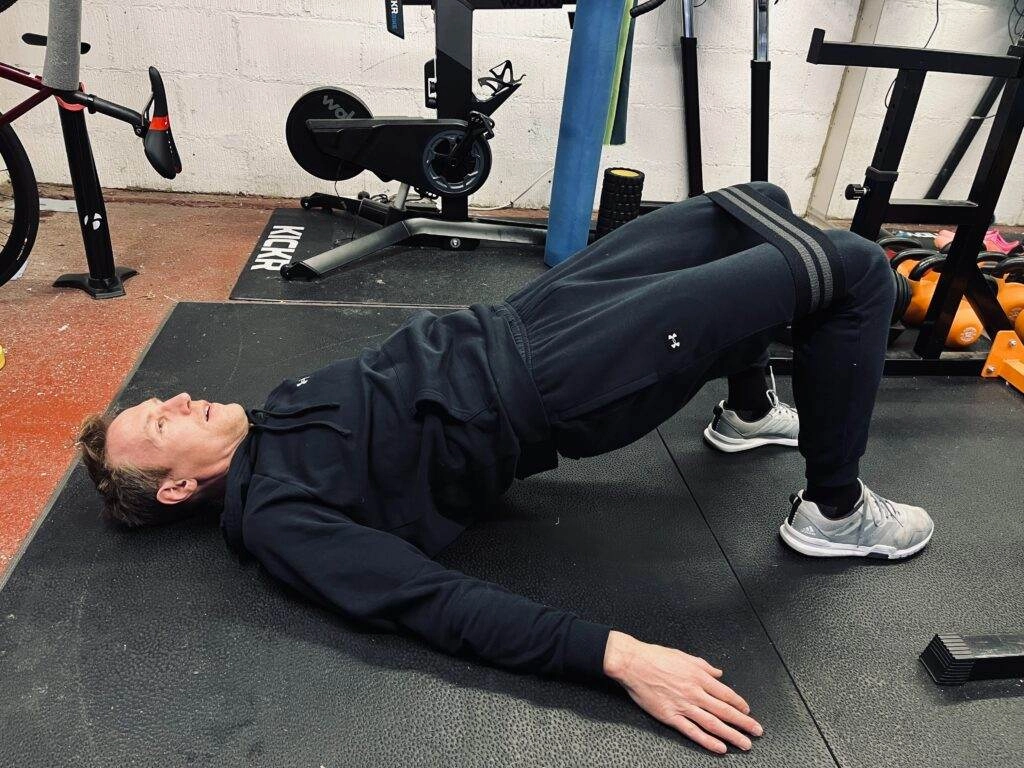
Cat-Cow Stretch
Improving Spinal Flexibility
The Cat-Cow stretch is a gentle exercise that improves spinal flexibility and relieves back tension. To do this stretch, start on your hands and knees with your spine in a neutral position. Inhale and arch your back, lifting your head and tailbone (Cow pose). Exhale and round your back, tucking your chin and tailbone (Cat pose). Repeat several times.
Relieving Tension
Adding the Cat-Cow stretch to your routine can help reduce back tension and improve flexibility. Do this stretch regularly to stay comfortable and keep your spine healthy.
Hamstring Stretches
Reducing Tightness
Hamstring stretches can help reduce tightness in your hamstrings, which can affect your back. To do a hamstring stretch, sit on the ground with one leg extended and the other bent.
Reach towards your extended foot, keeping your back straight. Hold for several seconds, then switch legs.
Techniques for Effective Stretching
Use proper techniques to make sure your hamstring stretches are effective and prevent back pain. Add these stretches to your routine to improve flexibility and reduce discomfort.

Conclusion
By fixing bike fit, strengthening your core, and using proper technique, you can reduce the risk of back pain. These tips and exercises can help you ride more comfortably and without pain.
Don’t let back pain stop you from enjoying cycling. With the right strategies and exercises, you can ride pain-free and improve your performance. Stay proactive, stay strong, and keep pedalling towards a healthier, happier you.
FAQs
What are the common causes of lower back pain in cyclists?
Common causes of lower back pain in cyclists include poor bike fit, lack of core strength, prolonged riding, and incorrect riding technique.
How can I prevent lower back pain while cycling?
Preventative measures include ensuring proper bike fit, strengthening core muscles, incorporating flexibility exercises, taking regular breaks, and maintaining proper technique.
What exercises can help reduce lower back pain?
Effective exercises include planks, bridges, Cat-Cow stretch, and hamstring stretches. These exercises target the core, glutes, and lower back muscles, enhancing stability and reducing discomfort.
How important is bike fit in preventing lower back pain?
Proper bike fit is crucial in preventing lower back pain. Ensuring the saddle height, handlebar position, and frame size are appropriate for your body measurements can significantly reduce strain and discomfort.
Can a wider saddle help reduce lower back pain?
Yes, a wider saddle can provide better support for the pelvis, reducing lower back stress and enhancing comfort during rides.
What role does core strength play in preventing lower back pain?
Core strength is essential for providing support to the spine and maintaining proper posture during cycling. Strengthening the core muscles can reduce the risk of lower back pain and improve overall cycling performance.

Really appreciate the section on correct bike fit. It’s crazy how many folks overlook this and just jump on whatever bike. Adjusting my saddle height seriously changed my riding game. Cheers, Kier!
Loving the emphasis on core strength. It’s not just about the legs when cycling, the core stability makes a huge difference. Great insights!
Could you recommend some specific core exercises? I’ve been cycling more lately and want to do everything I can to avoid back pain.
Hamstring stretches are key. Love how you pointed out their importance. Tight hams contribute to so much discomfort. Kudos, Kier.
Prolonged riding, you say? Guess that explains the aches after my marathon Netflix and ride sessions.
Had no idea about the frame size importance. Always thought if you can pedal it, it’s fine. Learning lots here!
You mentioned the role of the spine quite accurately. It’s crucial for cyclists to understand spinal health as it relates to biking. Spot on.
Guess it’s time to actually look at my bike setup instead of blaming the trails for my back pain. Who knew?
Taking regular breaks and stretching has been a game changer for me. Can’t believe I used to just grit my teeth and bear it. Solid advice!
I get what you’re saying, but don’t forget the frame size though. That’s a game-changer too.
The tips on maintaining proper technique are spot on. It’s all about form, not just going hard. Keep preaching the good word, Kier.
Totally agree on the technique part. Made a huge difference in my power output without any extra effort.
Thanks for the feedback, folks! Happy to hear the tips are making a real difference in your rides. Keep riding strong!